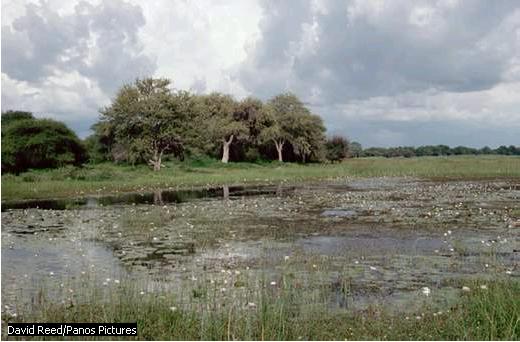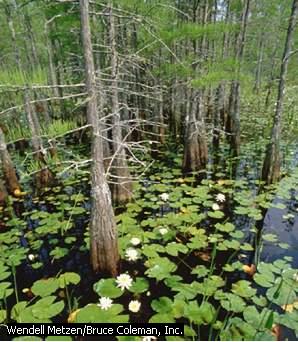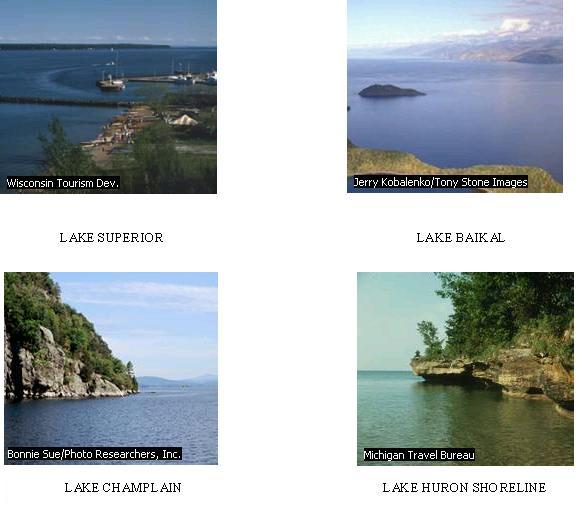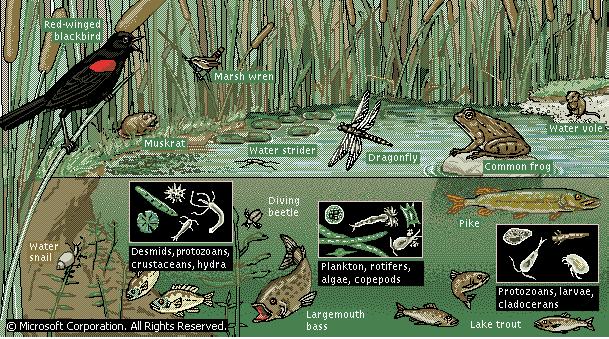
|

|

|

RESTORATION OF LAKES AND WETLANDS
P. Divya Rao


|

|

|


 ACT NOW BEFORE IT IS TOO LATE
ACT NOW BEFORE IT IS TOO LATE
 ACTIVITIES TO ACHIEVE THESE OBJECTIVES
ACTIVITIES TO ACHIEVE THESE OBJECTIVES
 INTRODUCTION
INTRODUCTION
 WHAT ARE WETLANDS?
WHAT ARE WETLANDS?
 WETLANDS' INVALUABLE BENEFITS
WETLANDS' INVALUABLE BENEFITS
 CONSEQUENCES WITHOUT WETLANDS
CONSEQUENCES WITHOUT WETLANDS
 WHAT ARE LAKES?
WHAT ARE LAKES?
 IMPORTANCE OF LAKES
IMPORTANCE OF LAKES
 WHAT HAS LED TO THE DEPLETION OF LAKES AND WETLANDS?
WHAT HAS LED TO THE DEPLETION OF LAKES AND WETLANDS?
 RUNOFF THREATS
RUNOFF THREATS
 NATURALLY OCCURRING EVENTS AFFECTING WETLANDS
NATURALLY OCCURRING EVENTS AFFECTING WETLANDS
 RESTORATION
RESTORATION
 CONCLUSION
CONCLUSION
 Integrated approach
Integrated approach
 Creation of databases
Creation of databases
 Technological innovations
Technological innovations
 Artificial lakes
Artificial lakes
 Initiatives pertinent to India
Initiatives pertinent to India
| ACT NOW BEFORE IT IS TOO LATE |




|
The poster titled "ACT NOW BEFORE IT IS TOO LATE" is designed in the form of a watch divided into three parts which explain the following,
1. The first part shows the purity and abundance of lakes and wetlands before the industrial revolution. They had a self-purification system to cleanse themselves by natural processes without the intervention of man.
2. The second part shows the depletion of lakes and wetlands, and the drastic changes that have taken place after the industrial revolution.
3. The third part shows man's realization of the importance of lakes and wetlands and their restoration work.
The main objective of the poster is to bring out the current trends in lakes and wetlands' restoration including the hydrological and biophysical aspects. And also to increase people's participation, role of non-governmental, educational and governmental organizations and future research needs for the restoration, conservation and management of wetlands.
|
ACTIVITIES TO ACHIEVE THESE OBJECTIVES
Under valued water resource |




|
1. Increase public awareness and commitment;
2. Develop a wetland database to understand wetland dynamics;
3. Protect and secure existing wetlands;
4. Create, reclaim and rehabilitate wetlands;
5. Strengthen legislation, policies, agreements and compliance activities;
6. Strengthen local planning processes and commitments;
7. Improve coordination and planning among governmental and non-governmental organizations;
8. Effectively evaluate the program.
The time is ticking. Mankind should wake up before the wetlands are gone forever.
Detailed below are the various aspects of lakes and wetlands, their importance, depletion that has taken place through the ages, and reasons for their restoration.
| INTRODUCTION: |




|
Water is a very essential component of life and without it drastic changes can take place in the environment, endangering living beings. Water is the primary factor that controls the environment, plant and animal life. Fluctuating water levels for varying lengths of time lead to the development of plants and animals different from those found in habitats that are purely aquatic or totally dry. The discussion here will be confined to wetlands and lakes.
| WHAT ARE WETLANDS? |




|
Wetlands are transition zones, where land meets water. These unique environments are characterized by the presence of water that saturates the soil or covers the land for all or part of the year. As wetlands have both terrestrial and aquatic characteristics, they are one of the most diverse ecosystems on earth. They play a crucial role in environmental cycle.
How Do Wetlands Come Into Existence?
The formation and role of a wetland is driven by its location in the watershed, the presence of water during significant periods, soil quality and ultimately, plants and animals. In fact, soils and plants act as "identifiers" for each wetland.
As sediment is deposited along river corridors, opportunistic plants and animals seek out the new habitat and flourish. As these areas mature, the soils change and impact the variety of plant and animal species. Thus new species may colonize. This process is called succession.
WETLAND OF THE OKAVANGO DELTA


OKEFENOKEE SWAMP
At the mouths of rivers, sediments are often deposited forming alluvial plains. Marsh grasses find these areas desirable. In addition, other plants and many animals are attracted to these deltas. Aging lakes that fill-in with sediments form shallow wetlands. This area supports shrubs and trees adaptable to life in a wet environment.
Wetlands, once considered mosquito-infested, a no man's land with little economic or social value, are today often considered a saving grace of the planet earth. Over the past several decades, a better understanding of the ecology of wetlands and their invaluable benefits to all species and the environment has changed attitudes towards these diverse habitats.
Wetlands include swamps, marshes, bogs, ponds, sloughs, lakes, streams and wet meadows to name just a few. Biologists categorize wet areas according to their formation, the types of vegetation they support, flooding pattern, water chemistry and soils. So many different wetland types and subtypes have been identified that it is simpler to look at broad categories of wetland systems and some of the wetland types that are included within the larger systems.
Ninety percent of the region's (Karnataka) wetlands belong to three categories that represent fresh-water systems. These include
1) Lacustrine: associated with lakes;
2) Riverine: habitats contained within channels such as rivers and streams;
3) Palustrine: meaning "marshy," including wet areas such as marshes, swamps and bogs.
Due to the abundant food supplies, vegetative cover and water they contain, wetlands support a wide diversity of wildlife species. These areas provide refuge for endangered and threatened species; important breeding, feeding, and migratory habitats for migrating waterfowl, shorebirds, and songbirds; and habitat for many water-loving fauna including insects, reptiles, amphibians, crustaceans, and mammals. Wetlands, especially marshes adjacent to large bodies of water, also provide critical spawning and rearing habitat for fish.
Wetlands not only offer habitat for flora and fauna, but provide many socioeconomic services as well. Acting as giant natural sponges, wetlands absorb runoff from rain and melting snow and slowly release the stored water during drier periods, preventing flooding of rivers and streams. Dubbed "nature's kidneys," wetlands also provide natural purification systems by absorbing, filtering, and processing sediments, fertilizers and other pollutants, improving the water quality. By collecting sediment from surface runoff, wetlands reduce bank and soil erosion, and prevent silt from clogging rivers and filling lakes.
The role of wetlands, both natural and man-made, in improving water quality of streams, rivers, and lakes is illustrated with examples of fringe, instream, and riparian wetlands. Fringe wetlands have been shown to reduce inputs to freshwater lakes. Instream wetlands can improve habitat and provide some water quality function to small streams, and riparian wetlands along larger rivers play important roles in both capturing sediments and nutrients from the river and serving as buffer between uplands and the river.
| WETLANDS' INVALUABLE BENEFITS |




|
1. Water purification system - wetlands provide a natural filter for contaminants and excessive nutrients, improving water quality and renewing water supplies.
2. Irreplaceable habitat - nesting, feeding and staging ground for many species of waterfowl and other wildlife such as reptiles and amphibians.
3. Natural shoreline protection - protecting coastal areas from erosion.
4. Reservoir - helping control and reduce flooding through water storage and retention.
5. Source of oxygen - playing a vital role in the natural evapotranspiration and climatic cycle.
6. Recreational activities like hiking, bird watching, hunting, trapping, and fishing.
7. High quality spawning and nursery area for many species of fish.
8. Sustain threatened and endangered species.
9. Restore natural biological diversity.
10. Connect wildlife corridors for easy movement and healthy interactions.
11. Re-establish native vegetation - a sustainable food source for wildlife.
12. Haven for biodiversity providing ecological niches for all manner of rare, native plants and animals.
| CONSEQUENCES WITHOUT WETLANDS |




|
Without wetlands, one can expect an increase in flooding, decrease of animal, plant and birds species, increase in erosion, decrease in water quality, and revenue loss. Vegetated riparian wetlands in agricultural areas have proven to remove high percentage of phosphorus and nitrogen from runoff water. Without these wetlands, increased nutrient loading to rivers, streams and lakes could result in algal blooms and over-abundant aquatic plant growth. When these algae and plants die, oxygen in the water is used during the decomposition process. This can result in oxygen deprivation, which may lead to fish kill.
When agriculture and developmental practices impact wetlands, the water storage and flood control capacity of the land decreases, increasing the likelihood of costly flood damage downstream.
| WHAT ARE LAKES? |




|
Lakes are large bodies of water, home to many aquatic animals and plants. They rely on wetlands to filter runoff, "purify" water, exchange groundwater and provide essential habitat for fish and wildlife populations. The increasing anthropogenic effects on the lakes are of concern as the values of the lakes are in jeopardy.

| IMPORTANCE OF LAKES |




|
1. Home to many aquatic animals and plants.
2. Source of minerals.
3. Source of recreation and aesthetic enjoyment.
4. Source of drinking water
5. Provide water for irrigation and industries
6. Transportation
7. Help in the generation of hydroelectric power
8. Dilution of pollutants

POND AND LAKE LIFE
Still water in general is much warmer than rivers and streams, and can support many different kinds of plant and animal life. The silted bed of ponds and the shallower parts of lakes support rooted plants and burrowing larva, food for free-swimming animals such as fish and frogs. In deeper zones, where oxygen is less abundant, only animals adapted to the cold environment exist. Planktons develop at all levels.
| WHAT HAS LED TO THE DEPLETION OF LAKES AND WETLANDS? |




|
A rapid population increase accompanied by unplanned developmental works has led to the pollution of surface waters by residential, agricultural, commercial and industrial wastes / effluents and decline in the number of waterbodies. Increased demands for drainage of wetlands have been accommodated. Various anthropogenic activities have altered the physical, chemical and biological processes within aquatic ecosystems. Collection of silt and pollutants are the two other important reasons for the depletion of lakes.
|
RUNOFF THREATS
Proper pricin |




|
While wetlands can reduce the impact of some pollutants, too much pollution will negatively impact the wetland. Thus, the quality of a wetland is dependent on the water flowing into them and the pollutants that the water carries with it due to activities in the watershed.
Runoff, originating with rainfall or snow melt, that contains pollutants - oil, grease, fertilizers or pesticides - is called non-point source pollution. In addition to the potential of runoff polluting wetlands, it also can pollute other surface waters such as lakes, rivers, and oceans. Eventually it can reach groundwater, which is often used for drinking water.
| NATURALLY OCCURRING EVENTS AFFECTING WETLANDS |




|
Hurricanes, droughts, erosion, drops in groundwater levels - has destroyed or severely threatened some wetlands
| RESTORATION: |




|
Failure to restore these ecosystems will result in sharp increase in environmental costs, extinction of species or ecosystem types, and permanent ecological damage. It may lead to desertification due to disturbed water cycle. The climatic conditions will also change i.e. there will be an increase in temperature and decrease in rainfall.
Due to losses being so great, a regional strategy is necessary to preserve the remaining wetlands. An integrated and accelerated effort toward environmental restoration and preservation is needed to stop further degradation of these fragile ecosystems.
"Restoration" is the process of returning the wetland system to an approximation of its predisturbed condition. This does not mean returning all altered wetlands to their unaltered state. It simply means replacing the lost values with newly created or "restored" wetlands. This ensures that the ecosystem structure and function are recreated or restored, and that natural dynamic ecosystem processes operate effectively again. Preservation and protection is the most economical way to "manage" wetlands. In other words the goal of restoration is to replace the structural and functional aspects of a naturally formed wetland. A "restored" wetland should look naturally formed. It should also support values-the array of biological, chemical and physical processes and interactions-found in the naturally created wetland.
An increase in the quantity and quality of wetland resources can be accomplished through restoration of previously filled, drained or polluted wetlands, and creation of wetlands in appropriate places. To successfully increase the acreage and function of the wetlands, restoration efforts must imitate the hydrology, water quality and biota of comparable natural wetlands. The remaining wetlands are critical to the protection of water quality, fish and wildlife habitat, human health and a healthy long-term economic environment.
The intensity of restoration techniques will depend on the level of disturbance to the values of the original wetland. The best way to protect the quality of wetlands is for every person in the watershed to prevent potential pollutants from being carried by runoff or infiltration.
Considerable advances have been made in large-scale wetland restoration. Yet, restoring wetlands to their original condition-replicating the complex and diverse physical, chemical, and biological interactions-hasn't been well documented.
Lakes are sinks for incoming contaminants that recycle and maintain the impaired conditions. Lake restoration is viewed in watershed context. Abatement of eutrophication, siltation and contaminant problems are more effective when inputs are controlled. Reduction of inputs enhances the long-term effectiveness of in-lake approaches.
| CONCLUSION: |




|
From the above, it can be understood what lakes and wetlands are, and their importance to all living beings and the environment, and the consequences if they are polluted and misused further. The consequences that are being faced today are a warning to mankind. So let all mankind join together and make an effort to restore and conserve them. Time is ticking. We should wake up before they are gone forever.
| ADDRESS |


|
1.) Std 9th Div B,
Poorna Prajna Education Centre,
Sadashivanagar,
Bangalore - 560080,
Karnataka,
INDIA

|

|